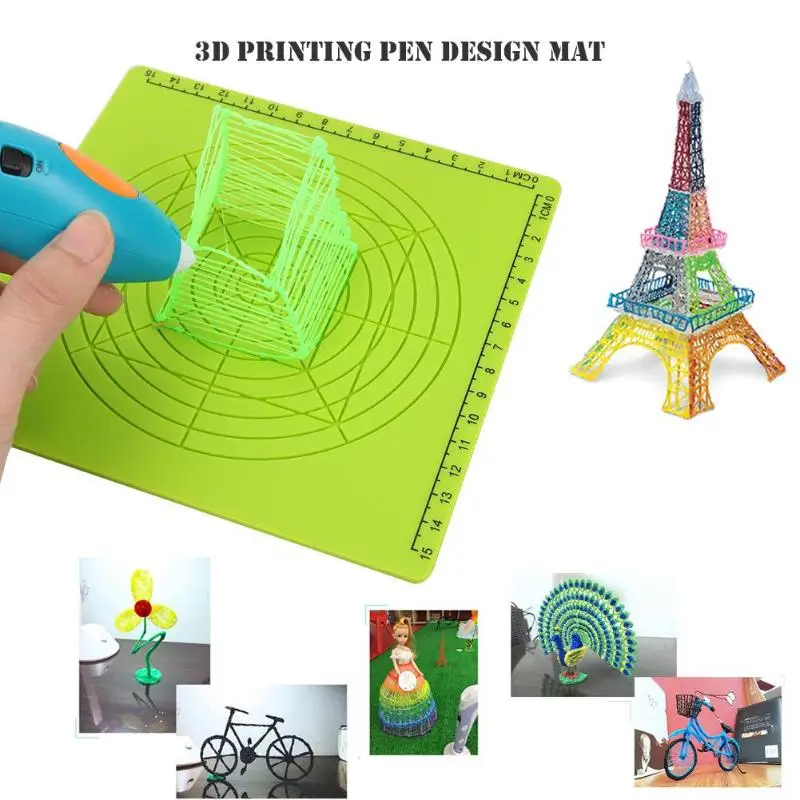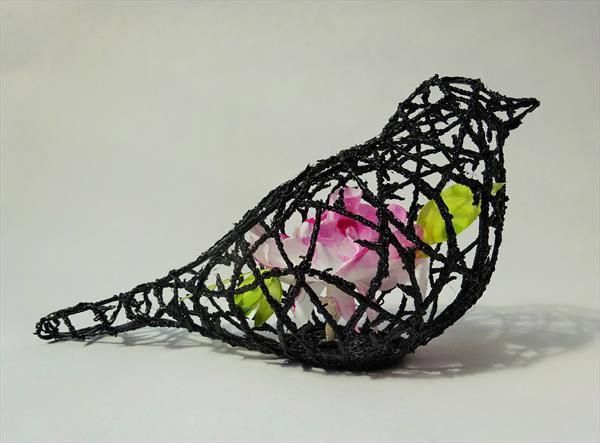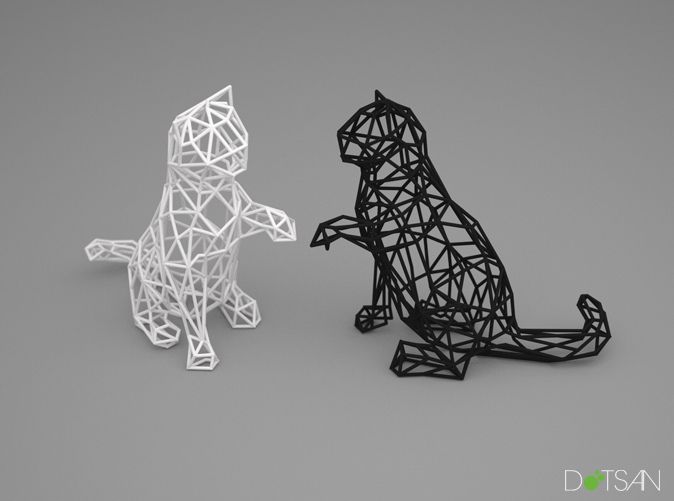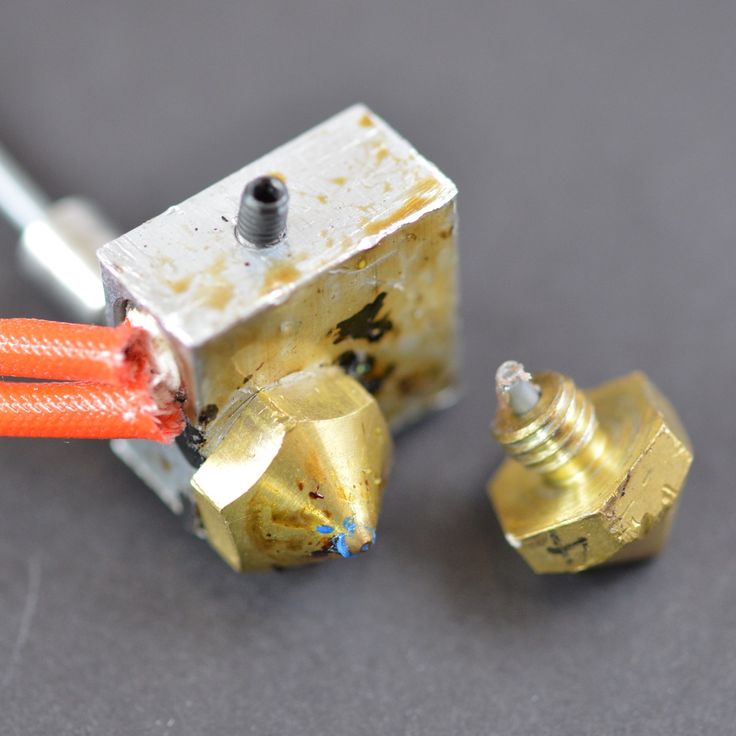3D printer pen designs
10 Cool Things To Make With A 3D Pen For Beginners
There is no better way to express your creativity than through art. With the recent advances in technology, 3D artists can now create their work on the go without having any artistic skills!
3D pens are a great way that let you ‘draw’ in three dimensions and craft a piece of art. They are relatively low-cost and easy to use, making them perfect for beginners.
3D pens can be used for a variety of purposes, including crafting, architecture, and even education. While some may see 3D pens as nothing more than a toy, the reality is that these versatile tools can have a wide range of applications. So whether you’re an artist or an engineer, a 3D pen might just be the perfect tool for you.
In this blog post, we will take a look at some cool things you can make with a 3D printing pen. We will also provide some tips on how to get started. So, if you are interested in learning more about 3D printing pens, keep reading!
Read More About:
- What Can I Make and Sell With a 3D Printer? (10 min read)
- 6 3D Printing Business Ideas That Anyone Can Start Today! (3 min read)
- How to Use a 3D Pen?
- What Filament Do 3D Pens Use?
- 10 Cool Things to Make With a 3D printer For Beginners
- 1.
Handmade Jewelry
- 2. Animal Toys
- 3. Architectural Model
- 4. ArtWork and Wall Painting
- 5. Mobile Phone Stand
- 6. Keychain
- 7. Customized Container Box
- 8. Science Diagrams
- 9. Decorative
- 10. Repairing Something With 3D Pen
- 1.
- Final Thought
How to Use a 3D Pen?
The 3D pen works in much the same way as other printing devices, it produces 3D objects by heating up the plastic filament and forcing it through an extruder.
The process for making these items is very simple: you just need heated liquid filaments such as PLA or ABS that’s been pushed through the extruder of your Pen—a glue gun does exactly this!
Once melted at its melting point, all we have left to do are paint or mold our desired shapes onto whatever object will be receiving them before letting them cool naturally.
What Filament Do 3D Pens Use?
3D pens use a variety of filaments, depending on the specific pen.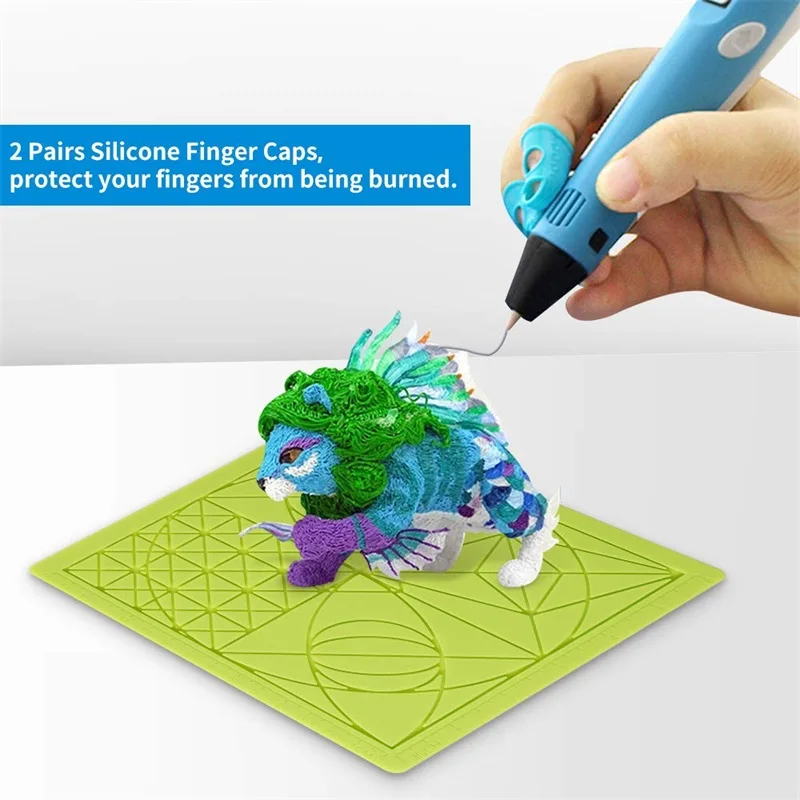 The most common type of filament is ABS and PLA. The type of filament you use will depend on your intended use for the pen.
The most common type of filament is ABS and PLA. The type of filament you use will depend on your intended use for the pen.
Each type of filament has its own benefits and drawbacks, so it’s important to choose the right one for your project.
For example, PLA is biodegradable, so it may be a better choice if you’re looking for an eco-friendly option. Alternatively, ABS is stronger and more heat-resistant, making it a good choice for projects that require durability. Ultimately, the type of filament you choose is up to you and will depend on your specific needs and preferences.
Some 3D pens even have the ability to use multiple types of filament, giving users even more flexibility in their creations.
However, PLA and ABS are two of the most commonly used filament types. ABS filament is slightly more expensive but more durable and flexible. PLA filament is less expensive but not as durable.
But I recommend PLA filament for beginners.
10 Cool Things to Make With a 3D printer For Beginners
1. Handmade Jewelry
Handmade Jewelry3D pen jewelry is a new and exciting way to create one-of-a-kind pieces of jewelry. You can create intricate designs and patterns that would be impossible to create with traditional jewelry-making techniques.
You can also add personalization to your jewelry by adding initials, names, or dates. Best of all, 3D pen jewelry is relatively inexpensive and easy to make.
2. Animal ToysOne of the most popular uses for 3D pens is to create animals. By carefully laying down layers of material, it is possible to create realistic-looking animals that can be used as decorations or toys.
With a little practice, you’ll be able to create all sorts of amazing sculptures and other works of art. So why not give it a try? You might just surprise yourself with what you’re able to create.
3. Architectural Model
If you love to build and design, a 3D pen can be a great way to create architectural models. A 3D pen can draw vertical and horizontal lines, as well as curves and other shapes.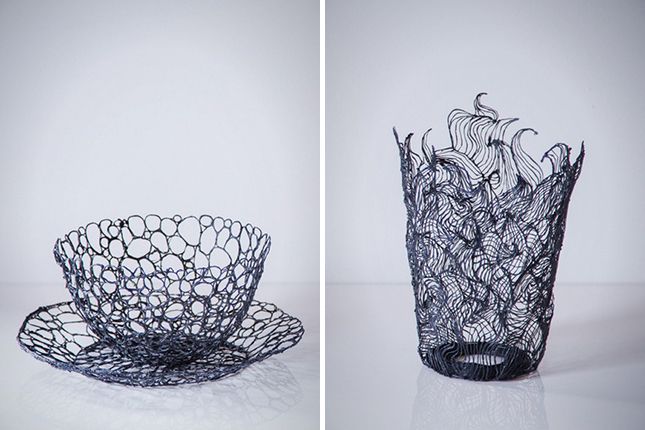 You can also add details such as windows, doors, and roofs.
You can also add details such as windows, doors, and roofs.
You can also create entire cities, or build detailed models of individual buildings. You can even create landscapes and make miniature replicas of famous landmarks.
4. ArtWork and Wall Painting
With a 3D pen, you can add dimension and texture to any drawing or picture. Simply trace the outline of your design with the pen, and then fill it in with color. You can also use the pen to add details like stripes, polka dots, or even words.
Plus, you can create artwork that can be viewed from all angles, making it truly unique.
If you love art and want to find a unique way to fill your walls, 3D pen art is the way to go! Using a 3D pen, you can bring your favorite pictures to life by adding dimension and depth. This will create a more realistic look that is closer to the real thing.
Plus, it’s a great way to show off your creative side. So if you’re looking for something different and fun, be sure to check out 3D pen art!
5.
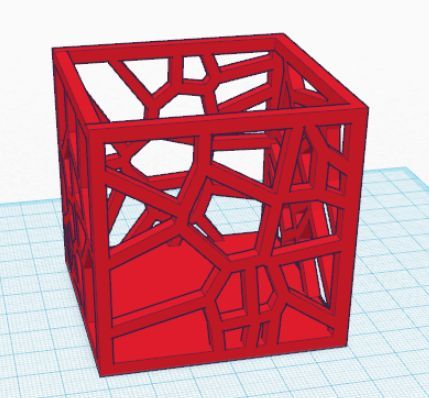 Mobile Phone Stand
Mobile Phone StandWho says you need a fancy 3D printer to make your own mobile phone stand? Now you can make your own stand that’s both functional and stylish using 3D pen.
In this case, the best material for a mobile stand is ABS. It’s sturdy enough to hold up your phone but also flexible so that you can use it in various situations without worrying about breaking or bending anything!
Simply use the pen to draw a stand in any shape or design that you like.
So what are you waiting for? Get started today and see what you can create!
6. Keychain
3D pens are a great way to add some personality to your keychain! You can use them to create any design you want, whether it’s something simple and geometric or something more complex and organic. Plus, 3D pens allow you to make keychains in any color or combination of colors you can imagine.
3D printed keychains are extremely durable and long-lasting. With proper care, your 3D pen keychain will last for many years to come.
7. Customized Container Box
Have you ever needed a small storage box or holder but couldn’t find anything that was just the right size? Well, now you can make your own simply by using a 3D pen.
To make one, simply start by drawing a basic shape with your 3D pen. Then, add additional layers to build up the sides of the box. Once you have the basic shape and size that you want, you can start getting creative with the design.
Add patterns, colors, or whatever else you like to personalize your storage box. And when you’re done, you’ll have a handy place to store all sorts of small items. So get out your 3D pen and give it a try!
8. Science Diagrams
We have heard a lot about how 3D printers are being worked out to provide students with a new way of learning. And, the same goes for 3D pens as well. However, 3D pens don’t cost as much as 3D printers.
Who says science and geometry have to be boring? 3D pen can bring your drawings to life in a whole new way. Just trace out your design on a piece of paper, and then start drawing with the pen.
Just trace out your design on a piece of paper, and then start drawing with the pen.
In math class, a 3D pen can be a great way to help students visualize concepts. For example, when learning about geometry, students can use a 3D pen to create models of different shapes. This can help them to understand the relationships between different dimensions.
It can also be used to create models of functions and equations. This can allow students to see how these concepts work in the real world. Using a 3D pen in math class can be a great way to engage students and help them to better understand complex concepts.
9. Decorative
A 3D pen can be a fun and creative way to make unique decorations for your home. You can use your 3D pen to create intricate designs in a variety of colors and materials.
You can even add textural elements to your creations by using different tip sizes or combining different mediums. And best of all, once you’re done decorating, simply let your creation harden and it will last for years to come.
So if you’re looking for a new and exciting way to add personality to your home, office, or business, consider picking up a 3D pen and let your creativity flow.
10. Repairing Something With 3D Pen
3D pens are becoming increasingly popular for a variety of tasks, including repairs. While they may not be able to fix everything, 3D pens can be used for a variety of small repairs, such as filling in holes or cracks and bonding broken pieces together.
3D pens offer a versatile and convenient way to make repairs, and they can be an especially useful tool for those who are not familiar with more traditional methods of repair.
For example, if you’ve got a loose screw or a small hole in drywall, using a 3D pen to fill it in can be a quick and easy fix. You can also use a 3D pen to add reinforcement to weak areas or create custom shapes and designs.
So next time you have a small repair to make, don’t reach for the super glue – grab a 3D pen instead!
Final Thought
3D pens are amazing tools that can be used to create some truly incredible things.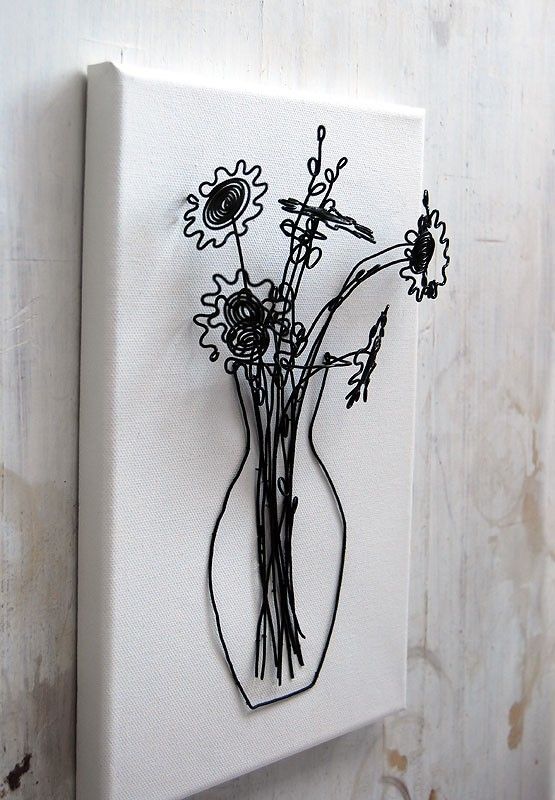 We’ve shown you 10 of our favorite 3D pen creations, but there are limitless possibilities of what can be made with these versatile devices.
We’ve shown you 10 of our favorite 3D pen creations, but there are limitless possibilities of what can be made with these versatile devices.
So if you’re just getting started with 3D pens or are looking for some new and exciting ideas, we hope this list has inspired you. These projects are a great way to show off your creative side and have a lot of fun with your 3D pen. What will you make next?
Have you tried any of these projects or do you have your own favorite way to use a 3D pen? Let us know in the comments below.
The best 3D pens in 2023: model and design in 3D
(Image credit: 3Doodler)When it comes to choosing the best 3D pens there's more choice than ever before; whether you're selecting one of the best professional 3D pens, the cheapest 3D pens or a 3D pen for a child, the choice is impressive. These 3D pens can be used to create art, models and toys, and new 3D pens can even use metal and wood filaments as well as plastics.
3D pens work in similar way to a glue gun. You press a button and they push out a type of liquid plastic, such as ABS or PLA, which quickly cools in the air and turns solid. One way of making art with them is to 'draw' a model from scratch. Another is to add decoration to an existing model, or another object. Alternatively, you could draw a series of flat shapes, then join them together to create 3D ones.
You press a button and they push out a type of liquid plastic, such as ABS or PLA, which quickly cools in the air and turns solid. One way of making art with them is to 'draw' a model from scratch. Another is to add decoration to an existing model, or another object. Alternatively, you could draw a series of flat shapes, then join them together to create 3D ones.
But which model should you buy? In this article, we've found you the best 3D pen for children, the best 3D pen for adults, the best 3D pen for beginners, and other great options. If you're after a crafting option with more power then consider the best Cricut machines or even the best laser cutters. Or see our best markers guide for more traditional pen options.
The best 3D pens: available now
Why you can trust Creative Bloq Our expert reviewers spend hours testing and comparing products and services so you can choose the best for you. Find out more about how we test.
1.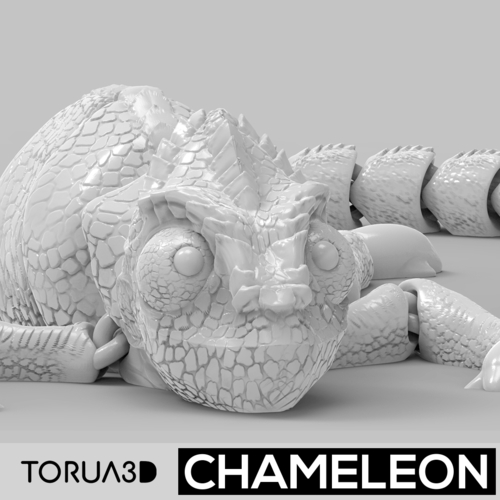 MYNT3D Pro 3D Printing Pen
MYNT3D Pro 3D Printing Pen
Best overall 3D pen
Filaments: ABS, PLA & more
Display: OLED
Control: Temp, speed
+ Smooth speed changes
+ Uses many filaments
- Overkill for kids
Lightweight and ergonomic, the MYNT3D Pro is easy to hold and use. You can adjust the speed and flow of the plastic filament for finer control. You can also make fine tweaks to its temperature, in one-degree increments. And there's even a OLED display to monitor this, too. Plus it's super-flexible.
Unlike many other 3D pens, the MYNT3D Pro supports a range of filament types: not just ABS and PLA. The pen is USB powered, so you can do some 3D drawing while you're away from a wall socket. The only possible downside to this 3D pen is that it's quite expensive, and probably overkill for beginners and kids.
CB rating: 5/5 stars
2. 3Doodler Start+ Essentials
The best 3D pen for kids
Filaments: PLA, ABS, FLEXY
Display: OLED
Controls: Basic options
+ Designed for children
+ For STEM learning
- Limited filaments
The 3Doodler Start+ is designed for children of six years old and above, ensuring this wireless 3D pen has been subjected to the strictest safety testing. It features no hot parts, and the nozzle and plastic can be touched without risk of burns. Controls are kept to the minimum, too, making it very easy to use for children.
It features no hot parts, and the nozzle and plastic can be touched without risk of burns. Controls are kept to the minimum, too, making it very easy to use for children.
As with all 3Doodler pens, you're restricted to the manufacturer's proprietary child-friendly filament. The basic pack comes with 48 strands, in eight different colours, each of which offers 60 inches' worth of filament. While it'll last you, buying new ones means only going to 3Doodler so you're in hoc to the brand's pricing.
CB rating: 4/5 stars
3. 3Doodler Create+
The best 3D pen for beginners
Filaments: PLA, ABS, FLEXY
Display: n/a
Controls: Speed / temp
+ Simple to use
+ FLEXY compatible
- Limited filaments
Never used a 3D pen before? Then I recommend the 3Doodler Create+ as this neat gadget is easy to use but versitile enough to do most crafting. It has a beautifully ergonomic design that's easy to use, even for first-timers. More experienced hands will enjoy using this too, with dual speed and temperature controls giving you a nice degree of control.
It has a beautifully ergonomic design that's easy to use, even for first-timers. More experienced hands will enjoy using this too, with dual speed and temperature controls giving you a nice degree of control.
This pen supports FLEXY plastics as well as PLA and ABS, although be aware they must be 3Doodler ones, which tend to be on the pricey side. You get 50 filaments included with this package, in a variety of colours, as well as a guidebook.
CB rating: 4/5 stars
4. 3Doodler PRO+
Best new 3D pen for professionals
Specifications
Filaments: ABS, Nylon, Wood, Plastic, Metals
Display: OLED, dial
Control: Temperature, speed, fan
Today's Best Deals
Reasons to buy
+
Uses metals and wood filaments
+
Variable controls for precision
+
Advanced new tech
Reasons to avoid
-
One for adults only
The new 3Doodler Pro+ is like no other 3D pen around. This is a stylish and feature-laden pen that can not only 'draw' with ABS but also metal, wood and copper. This is one of the best professional 3d pens on the market right now.
This is a stylish and feature-laden pen that can not only 'draw' with ABS but also metal, wood and copper. This is one of the best professional 3d pens on the market right now.
The 3Doodler Pro+ features an impressive number of features, including a variable dial that enables you to control temperature, speed and the internal fan for more accuracy.
This 3D pen has been created with adults in mind, and is a great pen for artists and designers looking for a new way to create. The 3Doodler Pro+ comes with materials to get started too.
5. MYNT3D Super 3D Pen
A good value 3D pen
Filaments: ABS, PLA
Display: n/a
Controls: Speed / temp
+ Anti-clog nozzle
+ Speed slider
- Limited filaments
Watching the pennies? Then check out the MYNT3D Super 3D Pen, which represents excellent value. It's similar to the Pro model, with the same gearbox and replaceable nozzle design but cheaper because you don't get the OLED display, or the temperature adjustment feature.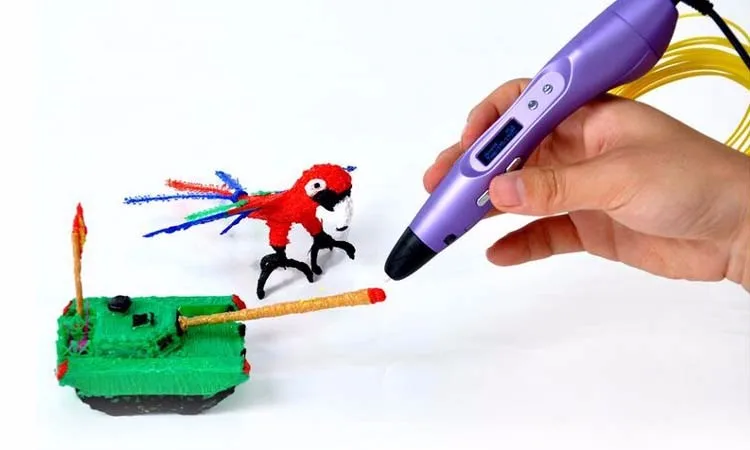 Instead, a temperature screw lets you switch between the correct heat for ABS and PLA, but you're limited to those two materials.
Instead, a temperature screw lets you switch between the correct heat for ABS and PLA, but you're limited to those two materials.
However, it's still a great 3D pen, which is easy to use in practice. Plus you get a stylus, three colours of ABS plastic and a 100-240V AC 50/60Hz adapter in the box. So overall, this 3D pen represents excellent value.
CB rating: 4/5 stars
6. MYNT3D Basic Pen
The best cheap 3D pen
Filaments: PLA, ABS
Display: n/a
Controls: Basic options
+ Simple and easy
+ Clog-free in use
- Can't use ABS filament
If you're really short on funds, you’re looking for a 3D pen that’s not only cheap to buy, but cheap to run too. And the MYNT3D Basic Pen ticks both these boxes.
Compatible with the same low-cost ABS and PLA plastics that 3D printers use, it allows you to push out plastic at slow, medium or fast speeds.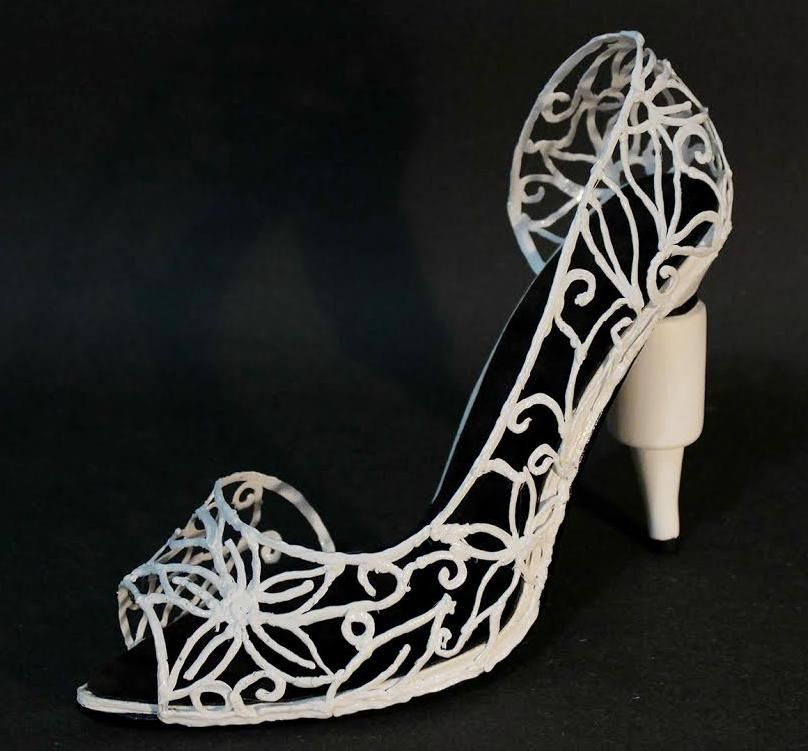 It also boasts a sealed nozzle and overbuilt gearbox for clog free use. Otherwise, this is a basic 3D pen, with no clever features. One thing to note, this 3D pen is powered via USB using a proprietary cable, so if you lose that, you’re in trouble. But the low price may make these compromises easy to accept if you're after a cheap 3D pen.
It also boasts a sealed nozzle and overbuilt gearbox for clog free use. Otherwise, this is a basic 3D pen, with no clever features. One thing to note, this 3D pen is powered via USB using a proprietary cable, so if you lose that, you’re in trouble. But the low price may make these compromises easy to accept if you're after a cheap 3D pen.
CB rating: 3/5 stars
7. MYNT3D Junior2 3D Pen for Kids
A great 3D pen for youngsters
Filaments: PCL
Display: n/a
Controls: Start / Stop
+ Made for kids
+ Cordless design
- Can't use ABS or PLA
Another child-friendly option, the MYNT3D Junior2 3D Pen is designed for ages six years old and above, with an easy-to-grasp design and low temperature nozzle to keep your kids safe. It’s shorter and thicker than most 3D pens, making it good for tiny hands. It works with PCL filament (which is biodegradable), and is not compatible with ABS or PLA.
This pen features the same sealed nozzle design as more advanced MYNT3D pens to stop clogs. It’s battery powered and can be charged via Micro USB. Overall, it feels a bit cheap, but does the job it’s intended for.
CB rating: 3/5 stars
The best 3D pens: frequent questions
Do 3D pens really work?
Yes, 3D pens really work, if what you want to do is create a 3D model by hand. If you want to create a 3D model based on a pre-existing design, though, you need a 3D printer.
A 3D pen uses the same type of heating element to melt filament that you get in a 3D printer. But while the latter is controlled by software, a 3D pen you control entirely yourself, much like using a glue gun, so you can get truly expressive. Once the filament leaves the filter, it cools rapidly, and hardens into whatever shape you have formed it into.
What is a 3D pen used for?
You can use a 3D pen to draw on any flat surface. But, as the name suggests, the real beauty of a 3D pen is that it allows you to draw in mid-air, using plastic filament, and create three-dimensional structures that then solidify.![]() Alternatively, you can draw over an existing object to enhance it.
Alternatively, you can draw over an existing object to enhance it.
Who uses 3D pens?
Anyone can use a 3D pen, but they're commonly used by hobbyists, artists, makers, fashion designers and home furnishing designers in creative projects. They're also used by engineers and DIYers to solve practical problems, by teachers in education, and by kids for fun projects.
What 3D pen should I buy?
The best 3D pen available today is the MYNT3D 3D Pen Pro . It's light and ergonomically designed, making it easy to hold and use, whether you're a newbie or an experienced hand. An adjustable feed helps you stay in control, and you can increase the temperature in increments. It's USB powered and you can use a wide range of filaments.
What's the best 3D pen for children?
The best 3D pen for children is the 3Doodler Start+ Essentials (2021) , which is suitable for kids from six and up. The controls are simple, and everything's been subjected to the strictest safety testing.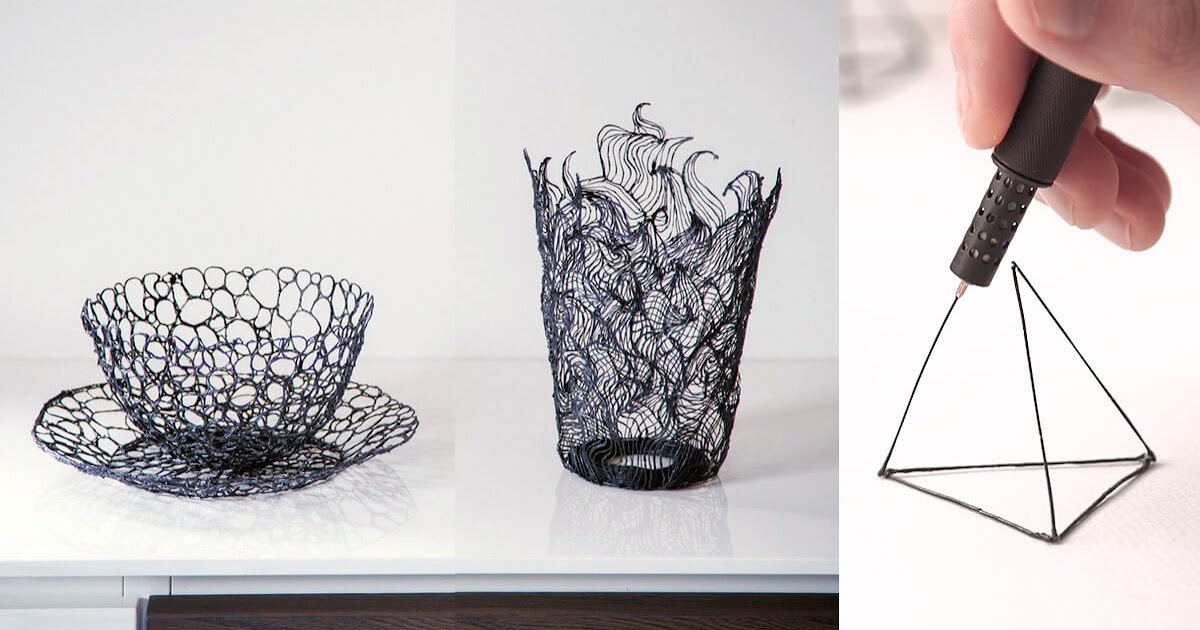 There are no hot parts on the pen and its Eco-Plastic filament is non-toxic, BPA-free, and completely biodegradable in household compost. It typically takes about 45 days for the plastic to break down.
There are no hot parts on the pen and its Eco-Plastic filament is non-toxic, BPA-free, and completely biodegradable in household compost. It typically takes about 45 days for the plastic to break down.
What's the best 3D pen for beginners?
In our view, the best 3D pen for beginners is the 3Doodler Create+ , because it's so easy to use. Just plug in the pen, insert your plastic, wait for it to heat up, then you can doodle in three dimensions. The extruded heated plastic hardens almost instantly, so you can draw 3D structures, freehand or on stencils. This 3D pen comes with different colours of plastics, which are all safe and non-toxic, and an activity guide book to get you started.
Are 3D pens environmentally damaging?
If you want to avoid harming the environment with your 3D pen, then the plastic we recommend using is PLA, which is short for Poly Lactic Acid. A polyester derived from renewable biomass, typically from fermented plant starch such as corn, cassava, sugarcane or sugar beet pulp, this type of plastic is both biogradable and sustainable. To be specific, it typically takes around six to 12 months to break down, while for most plastics it takes hundreds of years.
To be specific, it typically takes around six to 12 months to break down, while for most plastics it takes hundreds of years.
The other type of plastic commonly used in 3D pens, ABS, is not so great for the environment. Short for Acrylonitrile butadiene styrene, ABS is petroleum-based and non-biodegradable. It's both bad for the environment and more toxic to humans than PLA.
What's the best cheap 3D pen in the US?
If you're tight on cash and in the US, you can get a very decent 3D pen for not much money, in the form of the MYNT3D Super 3D Pen . Despite being just $39.99 at time of writing, it's an excellent 3D pen, with a stepless speed slider that lets you regulate flow for optimal control of material while you're drawing. You also get a ultrasonic sealed nozzle which virtually nearly clog-proof.
What's the best cheap 3D pen in the UK?
If you're in the UK, your best bet for a cheap 3D pen right now is the Nikand 3D Pen . Suitable for both adults and kids, it costs just £39.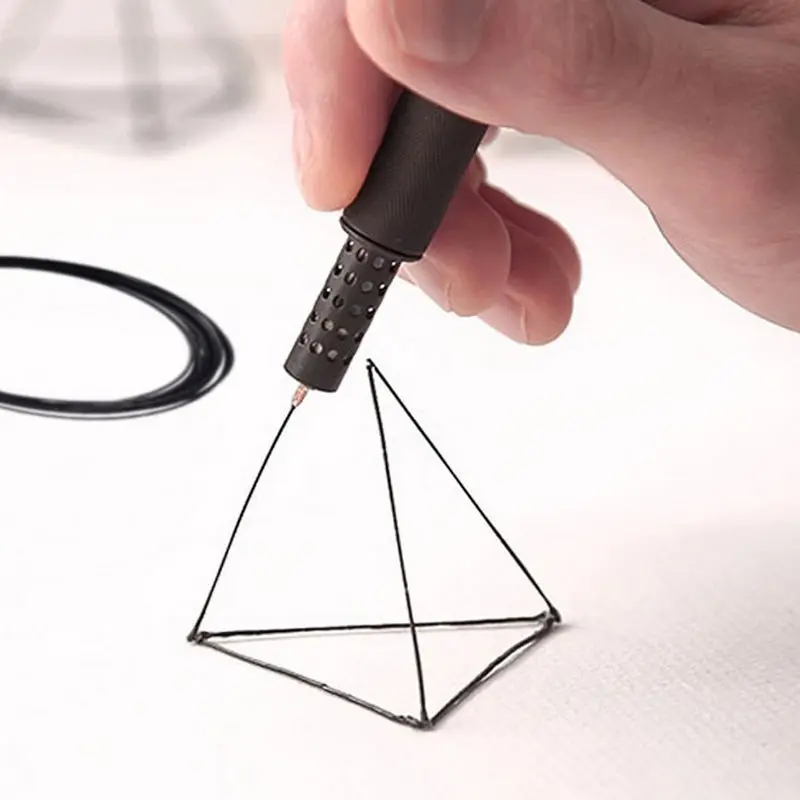 95 at time of writing, and is a nice pen that's easy to hold and use. It also comes with an OLED screen, support for PCL and PLA plastic filaments, and the ability to control speed of filament extrusion.
95 at time of writing, and is a nice pen that's easy to hold and use. It also comes with an OLED screen, support for PCL and PLA plastic filaments, and the ability to control speed of filament extrusion.
Read more:
- Glowforge Pro review: the most powerful laser cutter yet
- These are the best xTool Machines
- The best laptops for 3D modelling
Round up of today's best deals
3Doodler PRO+
£265
View
See all prices
powered by
Thank you for reading 5 articles this month* Join now for unlimited access
Enjoy your first month for just £1 / $1 / €1
Already have an account ? Sign in here
*Read 5 free articles per month without a subscription
Join now for unlimited access
Try first month for just £1 / $1 / €1
Already have an account ? Sign in here
Sign up below to get the latest from Creative Bloq, plus exclusive special offers, direct to your inbox!
Contact me with news and offers from other Future brandsReceive email from us on behalf of our trusted partners or sponsorsIan Dean is Digital Arts & Design Editor at Creative Bloq, and the former editor of many leading magazines.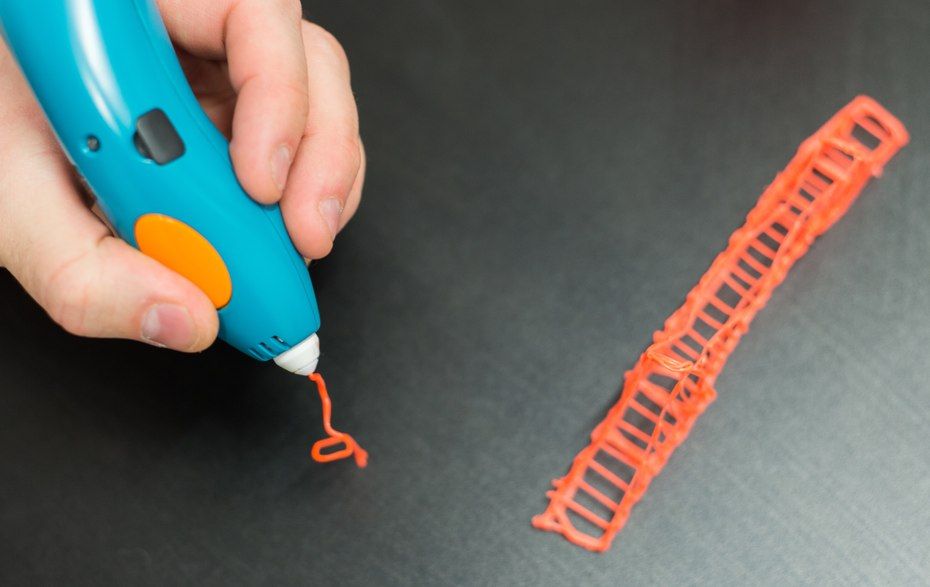 These titles included ImagineFX, 3D World and leading video game title Official PlayStation Magazine. In his early career he wrote for music and film magazines including Uncut and SFX. Ian launched Xbox magazine X360 and edited PlayStation World. For Creative Bloq, Ian combines his love to bring the latest news on NFTs, video game art and tech, and more to Creative Bloq, and in his spare time he doodles in Corel Painter, ArtRage, and Rebelle while finding time to play Xbox and PS5.
These titles included ImagineFX, 3D World and leading video game title Official PlayStation Magazine. In his early career he wrote for music and film magazines including Uncut and SFX. Ian launched Xbox magazine X360 and edited PlayStation World. For Creative Bloq, Ian combines his love to bring the latest news on NFTs, video game art and tech, and more to Creative Bloq, and in his spare time he doodles in Corel Painter, ArtRage, and Rebelle while finding time to play Xbox and PS5.
With contributions from
- Tom May
Decorating the interior with a 3D pen
We continue our series of articles about our talented and creative members of the 3Doodler community. From amateurs to professionals, these people have let their imaginations run wild and have been able to take their ideas from the pieces of paper to reality in order to create incredible things.
Ilma Wasty recently completed her large scale project for her Master of arts degree in interior design , in her work, she combined details drawn with a 3D pen and ordinary building concrete.
“ My first experience of drawing 3 D with a pen was almost random ,” says Ilma Bushra Wasty. So, at age 28, she
received her master's degree in interior design from the Chelsea College of Art at the University of the Arts in London.
And her project, Revealing the Pattern, combines subtle patterns made with a 3D pen, concrete and tiles. nine0003
“ I got a 3D pen from my teachers when I came to the UK ,” says Ilma, originally from Pakistan. " I was thinking of using the 3 D pen solely for fun ".
But in the first phase of her master's program, Ilma began to explore new concepts and tools. " Like a regular pen, or pencil, the 3D pen was a new tool for drawing and expressing myself ,” she says. “ I don’t see the 3D pen as an art form, but rather as a tool that can be used according to your needs.”
« The first thing I drew 3 D with pen was a small mug. It didn't turn out very well, as it was my first attempt at ,” she admits.
It didn't turn out very well, as it was my first attempt at ,” she admits.
But Ilma learned quickly when she discovered that the skills she acquired as a child will help her adjust to drawing with a 3D pen. « 3Doodler for me is a drawing tool that allows me to draw a 2D and 3D pattern at the same time ,” she says. " The way plastic is squeezed out of the 3 D pen reminds me of when I was younger I used to draw henna on other people's hands ."
This "bridge" between traditional culture and modern life became the basis of her graduation project. “ The Revealing the Pattern was inspired by old buildings in the architecture of Sindh, Pakistan ,” she explains. « This work was driven by a desire to express myself in space rooted in my culture ".
For this project, Ilma wanted to make subtle patterns a key feature of the installation. " I used the 3D pen to highlight the importance of handicraft and a modern interpretation of one of the traditional crafts - applying Islamic designs to tiles," she says.
due to weather conditions and weathering, they acquire a peculiar marine pattern ,” explains Ilma. “ Thus, this pattern is not immediately visible, it appears only after a long time .
Ilma says that the same patience is essential and key to working with a 3D pen. "Patience goes a long way ", she says, "but there is beauty in mistakes too. Patterns don't have to be perfect. Every mistake makes a particular pattern unique and beautiful."
Two years ago, such a device as a 3D pen was unknown to the general public, and if people saw such devices, their impressions were twofold: on the one hand, an unusual and interesting device that allows you to draw with plastic, on the other, a large, uncomfortable , a noisy and very expensive toy.0003
But time goes on and progress does not stand still. Engineers were able to reduce the size, remove unnecessary parts, add some control features, reduce weight and significantly improve the design of 3D pens. Marketers were able to optimize the production process and reduce costs. And today, for many, a 3D pen has become a welcome gift for the holiday, or a good tool for your hobby: modeling, scrapbooking, quilling and other areas of appliqué, etc.
Engineers were able to reduce the size, remove unnecessary parts, add some control features, reduce weight and significantly improve the design of 3D pens. Marketers were able to optimize the production process and reduce costs. And today, for many, a 3D pen has become a welcome gift for the holiday, or a good tool for your hobby: modeling, scrapbooking, quilling and other areas of appliqué, etc.
In this article, we will try to briefly tell you about all the popular models of 3D pens on the Russian market. We highlight the pros and cons, distinctive features and compare the characteristics. Which 3D pen to choose is up to you. nine0003
| 3D-handed MYRIWELL RP400A (Stereo Graffity Pen) |
LIGHT OF THE SPIRITIONAL RIDENT, and POST CLOSE OF ORDOMENED COST, and POSSIAL COMPLEN . It has a bright OLED display that shows the current settings - temperature, speed and type of plastic.
| Pros | Cons | |||||||||||||||
| Soft-touch finish OLED display; Light weight Temperature control; 6 plastic speeds; Automatic plastic feed; Can paint with both ABS and PLA; Ceramic safety nozzle; Housing color choice | 900
| Pros | Cons |
| Fully Russian Soft-touch finish Light weight Temperature control; Retract function; 8 plastic feed rates; Automatic plastic feed; Can paint with both ABS and PLA; Ceramic safety nozzle; Special pen holder; Spatulas and fingertips included. | LCD display; No USB power; Price Price |
| 3D-hand MYRIWELL RP100C |
9000 9000 3D RUCH MAYLL Compact design and metal body make Myriwell RP100C a great and unusual gift for adults and children.
| Pros | Cons |
| Metal housing; nine0102 Pleasant colors; Form; Can paint with both ABS and PLA; USB operation; Safety cap; | No plastic included; No socket adapter; 3 feed rates; Short wire; |
| 3D-ruler Myriwell RP100B (Steereo Pen) |
| Pros | Cons |
| Type of plastic
Large supply and unloading plastic buttons LCD display Small weight 9000 9000 EXPERISE temperature control;Can paint with both ABS and PLA; Housing color selection | Speed control 99Cons |
| Completely in Russian Soft-touch coating OLED display; Light weight Extrusion temperature control; 6 plastic speeds; Can paint with both ABS and PLA; Ceramic safety nozzle; Housing color choice Large size and weight No choice of plastic No display No temperature adjustment There is no choice of building color only company plastic 2. |


